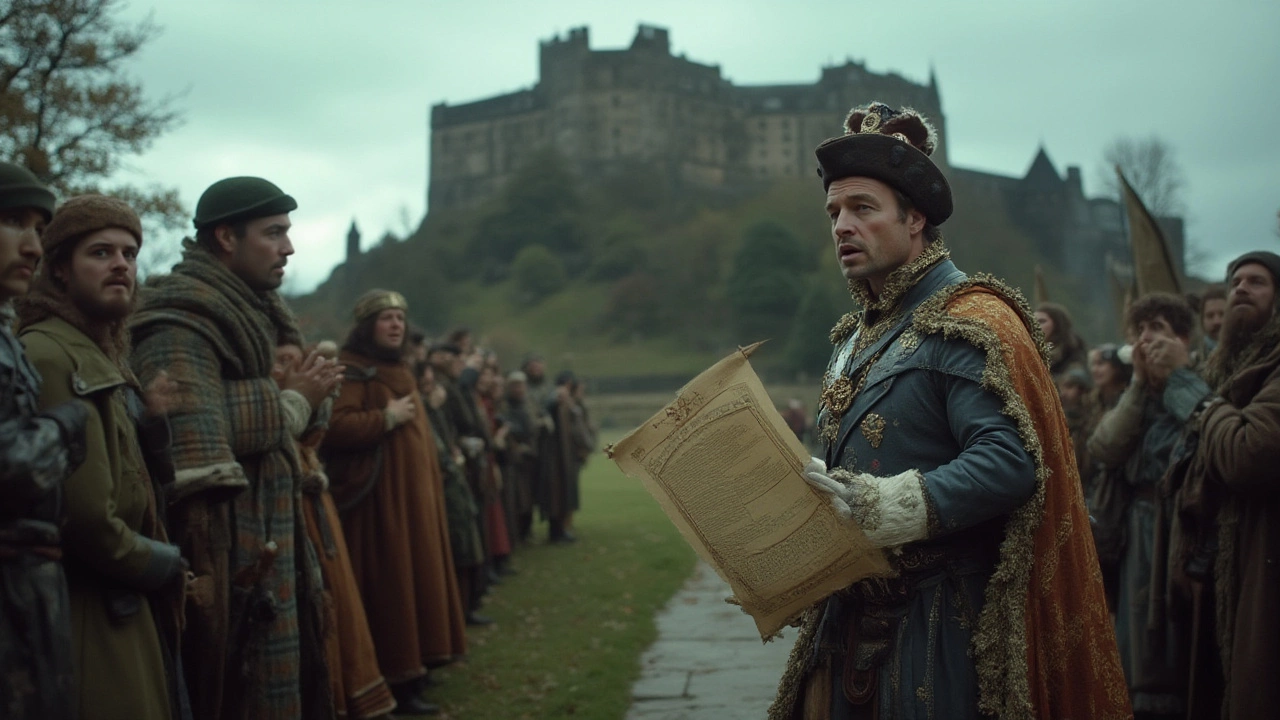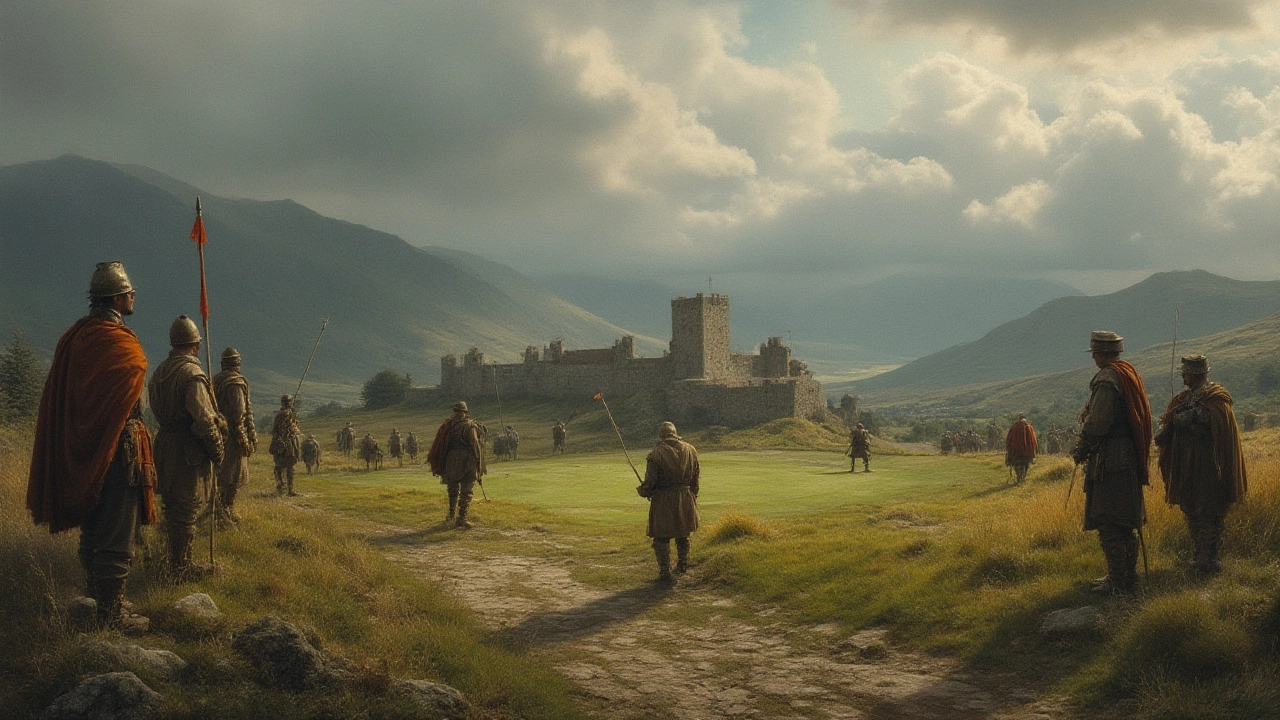If you tell a Scottish golfer today their favorite sport was once illegal, they’d probably laugh you off the course—or scowl and blame the English for good measure. Yet the truth is, the birthplace of modern golf had a real, royally-issued ban centuries ago. Think of it: strict laws, angry kings, and even a bit of military panic. Not exactly the quiet day out you’d expect on the links. So what happened? The story of why golf was banned in Scotland mixes war fears, rowdy youth, and undying passion for a game that just wouldn’t die.
Medieval Mayhem: Golf’s Troublesome Start
Golf’s tale didn’t start quietly. Looking back to the 1400s, Scotland was a land filled with tensions—brawls, political unrest, and endless threats from abroad, mostly from England, were daily headaches. The sport of golf had already taken root in Scottish soil, mostly around the eastern coast, cities like St Andrews and Edinburgh. Early golf was wild compared to today: holes were often marked by anything handy (a rabbit hole did the job), and clubs and balls looked nothing like the high-tech gear you see on tour now. Golf was the new craze, especially with young men looking to blow off steam after a long day or, well, skip their archery lessons.
Yes, that’s right—the first real clash between golf and authority was over the bow and arrow. Imagine the scene: you’re a medieval king facing hostile armies, and your best hope is training skilled archers. But instead of practicing deadly aim, your young soldiers are chasing balls across the green. By 1457, Scottish King James II was furious. His government needed more archers and less distracted youth. The Scottish Parliament issued a stark warning: "Football and golf not to be played." Yes—golf was considered as much trouble as early forms of football (which was more like a riot with a ball).
The 1457 Act actually said, in full medieval seriousness, "ye futebawe and ye golf be utterly cryit doune and nocht usit." So, the whistle was blown, or rather the horn sounded—no more golf, or face consequences. The law wasn’t a one-off; bans came again in 1471 and 1491. These weren’t just empty threats. The Scottish Parliament’s records show actual fines (in coin or goods) and public shaming for those caught swinging a club when they should’ve been stringing a bow.
Royal Wrath and Reluctant Compliance
You might wonder: did people really stop golfing? The answer is a big, Scottish shrug. Sure, some obeyed, worried about jail time, but plenty ignored the law, especially out in the countryside and smaller towns. There are funny accounts in old letters and diaries—like a 16th-century noblewoman writing about how her brothers sneaked their golf games between archery drills, bribing their instructors with homemade ale.
Royal attempts to control the game say a lot about Scottish society. Kings like James II, James III, and James IV viewed golf as an annoying distraction that sapped national defense. Archery was more than sport; it was life-or-death during wars with England or clan uprisings. Records from 1471 mention king-appointed "wardens" patrolling towns on Sundays to keep an eye out for illegal games, sometimes clashing with rowdy groups protecting their turf. The royal court itself, however, wasn’t totally immune either. James IV—who’d enforced bans harder than anyone before him—was later caught buying golf clubs of his own in 1502. Talk about not practicing what you preach!
By the early 16th century, the bans softened. Whether because of the king’s own swing or shifting military concerns, records show fewer prosecutions for the crime of golfing. Archery, meanwhile, went from urgent necessity to hobby as muskets and cannons changed the nature of war.

Golf’s Rebellion and Its Underground Survival
If anything, the bans only deepened people’s love for the game. Golf survived because communities bent the rules. Sunday was supposed to be for church and archery, but evidence shows townfolk sneaking out after services. In places like Leith Links (now a public park near Edinburgh), games were organized at dawn or dusk to dodge the warden’s patrols. Golfers even developed signals—like whistling twice from the church steps—to warn when authorities were near. Remnants of these rebellious days survived in some Scottish golf club traditions, long after the bans faded away.
Modern golf historians have dug up references in town records and even art from the 1500s and 1600s. Little sketches on the fringes of Bibles or tax ledgers show figures with crude clubs, while tavern keepers sometimes tucked "golf balls for hire" rent receipts behind drink menus. An old joke from the Aberdeen area—written in the local Doric dialect—mocked the law: "A mon canna learn the bow, if he's got no wish tae shoot ye English." The implication? Golfers knew why the ban existed, but didn’t see English armies at their gates every Sunday.
Every time authorities cracked down, locals adapted. Early organized clubs, like the Honourable Company of Edinburgh Golfers in 1744, began codifying rules, giving the sport structure and separating it from any taint of rebellion. By the 18th century, golf had outgrown its naughty reputation and gained respect—complete with clubs, tournaments, and even a royal approval stamp.
Legacy and What Modern Golfers Can Learn
If you walk the Old Course at St Andrews today, it’s wild to picture illegal games quietly played at dawn, each shot a silent bit of defiance. The Scottish golf ban story isn’t just a quirky footnote. It’s proof that sports can thrive in the face of opposition, surviving thanks to community and stubborn joy. By the 1800s, golf was deeply woven into the Scottish identity, from local barroom rivalries to elite competitions that drew international talent.
There’s a modern message here for today’s players, too. Next time you hear a rule or restriction at your local course and grumble, remember those medieval Scots who risked more than a casual slap on the wrist—they faced real penalties but couldn’t give up the game. Their stubbornness set roots for what would become global golf, leading to icons like Tom Morris and, centuries later, the Tiger Woods era.
Curious about the numbers? Check out this table showing how archery and golf intersected in Scotland during the ban era:
| Year | Edicts Banning Golf | Major Conflicts (Requiring Archery) | Golf Clubs Founded |
|---|---|---|---|
| 1457 | 1st Parliament Ban | Ongoing Border Wars | None (Game Still Street-Level) |
| 1471 | 2nd Parliament Ban Re-issued | English Invasions Continue | None |
| 1502 | Ban Softening as King Buys Clubs | Shift to Artillery in War | First Evidence of Formalized Play |
| 1744 | No Ban | Modern Conflicts | Honourable Company of Edinburgh Golfers |
If you’re planning a trip to Scotland or just interested in quirky trivia, here are a few tips:
- Visit St Andrews to see the birthplace of golf and learn about its outlaw past.
- Stop at local museums (like the British Golf Museum) for original documents and banned-club displays.
- Ask locals about "the old days"—many towns keep oral traditions alive, including stories of hidden games during the ban years.
The next time you grip a driver on a dew-soaked green, remember: the game survived royal bans, ridicule, and even war. Your round is part of a centuries-old rebellion, and the spirit of those original scofflaws is alive every time someone challenges a rule in golf—or life itself.
